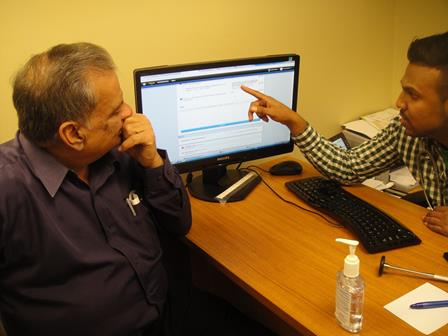Patient engagement and mobile health technology (or mHealth) are expressions that have permeated discussion and debate within health care organizations. The combination of the two has been touted as having the potential to advance the safety and quality of health care delivery, while simultaneously reducing costs and increasing accessibility. According to a recent PwC report, nearly 80 per cent of the 2,500 Canadians surveyed reported that they would be comfortable using a virtual monitoring service for a chronic condition. This begs the question – where is mobile patient engagement in the frontlines of healthcare in Canada today?
At the Regional Kidney Wellness Center in Brampton, Ontario, a progressive nephrologist has already taken the step of being a pioneer by bringing such technology to his practice. Using an intuitive and innovative platform called InputHealth, Dr. Kishan Mahabir has been reaching out to his patients to better their care. By developing a simple yet effective ‘mobile blood pressure engagement tool’ on the platform, he aims to engage patients with mHealth technology.
At the end of each visit with a patient, he quickly schedules an automated digital questionnaire (on his web browser) to go out to the patient’s phone or email address (with consent). The interactive questionnaire reminds them about things such as how to check their blood pressure properly and to take their meds, in addition to allowing them to submit their readings to him. “I have customized the tool to enhance my practice. I can monitor a patient’s response to therapy in between clinic visits and adjust therapy at intervals that I deem important,” explains Dr. Mahabir.
The digital questionnaires can be scheduled to go out however often the patient is comfortable with being engaged, with no extra effort on the part of the physician. With the platform being HIPAA-compliant and interoperable between any mobile or desktop operating system, safety and usability concerns are laid to rest. The information returns to the patient’s health record, and is automatically aggregated and presented in a user-friendly visual report.
So what have the patients thought thus far? “Every patient I have approached has been keen on utilizing the program. The patients truly see my interest and understand the importance of blood pressure monitoring at home. They have become more vested in their own health.”
Chronic kidney disease (or CKD), much like diabetes, has all the elements to make it a poster-child for mobile patient engagement. The condition is often life-long, there is often a long-term relationship developed with the treating clinician, the condition can be life-altering (or life-ending) if it progresses, and most importantly, there can be good outcomes if it is well controlled. However, unlike diabetes, CKD has not gotten the same attention from the mobile developer market, whereas there is a gamut of apps and digital services for diabetes. As a result, patients with such conditions have traditionally been left with fewer resources to empower or educate themselves.

“Our blood pressure tool is only the tip of the iceberg as we test waters with our patients”, Dr. Mahabir explains. “We are actively working towards incorporating validated questionnaires directed towards patients with chronic kidney diseases using mHealth. Going a step further, we can educate patients by sending patient specific education modules that we create based on their diagnoses. This will truly revolutionize not only the patient experience, but allow treating nephrologists to have data that is powerful and transformative.”
Similarly, InputHealth has been successfully applied to a variety of clinical settings across Canada, from cardiac-transplant clinics in Vancouver, BC to rehabilitation centres in Southern Ontario. Powerful mobile technologies that involve patients do exist and are ready to meet the demands at the frontline of our burdened health care system – what is needed now is for clinicians take the next step and bring it into their practices.




